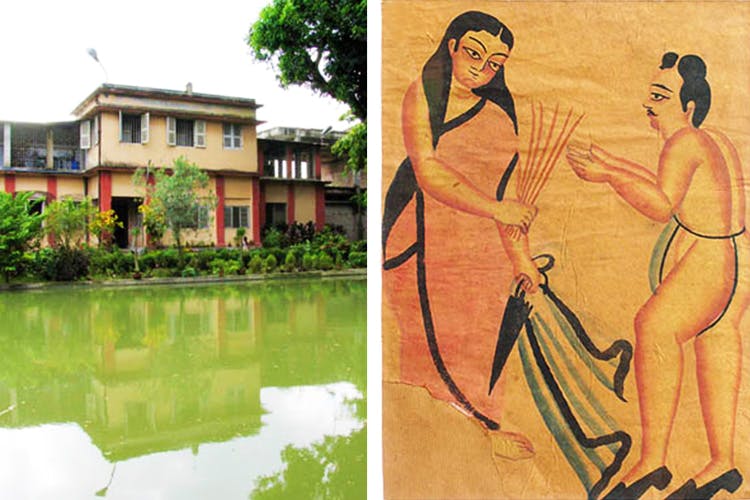Gurusaday Museum is on the verge of closure and here’s why you should visit it right now.
From 12th Century Sculptures To Jamini Roy’s Early Works: Check Out This Unique Museum Before It Shuts Down
Shortcut
What is it?
If you have ever wanted to sample Bengal’s folk art, Gurusaday Museum on Diamond Harbour Road is where you should go. Bengali folklorist Gurusaday Dutt spearheaded the Bratachari — a school of spiritual thought whose aim was to preserve Bengal’s culture and tradition. He spent his life collecting art objects from the remotest corners of undivided Bengal — Kalighat paintings, patachitras, kanthas, terracotta panels, stone sculptures, wooden carvings, dolls, toys — between 1929 and 1939, he had collected 2,325 specimens all of which you can see on display at Gurusaday Museum.
What Do We Love?
Did you know that Gurusaday Museum has the largest collection of kanthas in Asia? Kanthas are quilts made with old dhotis and saris — the tradition hails from areas in Faridput, Jessore, Dhaka and Khulna, where the stitched design would often spread out a narrative. The museum has a kantha by folk artist Manada Sundari where the artist has depicted the inside and outside of a zamindar’s mansion replete with motifs of soldiers, horse-drawn phaeton, human faces peeping out of its windows and a twirling girl.
Apart from kanthas, you’ll find patachitras — scrolls designed for the purpose of storytelling. If you pay attention, you’ll find historic folklores depicted frame by frame — folktales of kings, queens, dacoits, Hindu deities etc.
The museum also has 209 terracotta objects from 16th to 19th centuries, 44 stone sculptures from 10th and 12th centuries, paintings from 17th and 20th centuries {including exclusive editions of Jamini Roy’s initial works} and 198 wooden carvings from 18th and 19th centuries.
The list is still not done! The museum also houses 419 historic dolls and toys, 100 dasavatar taash {deck of playing cards}, 363 square pots, 80 terracotta saras {deep plates of terracotta which are used as base for painted stories} and what not. You’ll also find wooden figurines showcased in glass cases, collected from Birbhum, Comilla and Faridpur {the last two areas are in Bangladesh now}.
Anything Else?
Unfortunately, the textile ministry recently cut off all funding for the Gurusaday Museum misconstruing it as a private body — which essentially means that its gates won’t stay open for long, and all these historic relics are in jeopardy. If you have even the most remotest interest in the history, folklore, exquisite handicrafts, and the tradition of Bengal folk art, pay a visit to this museum ASAP.

